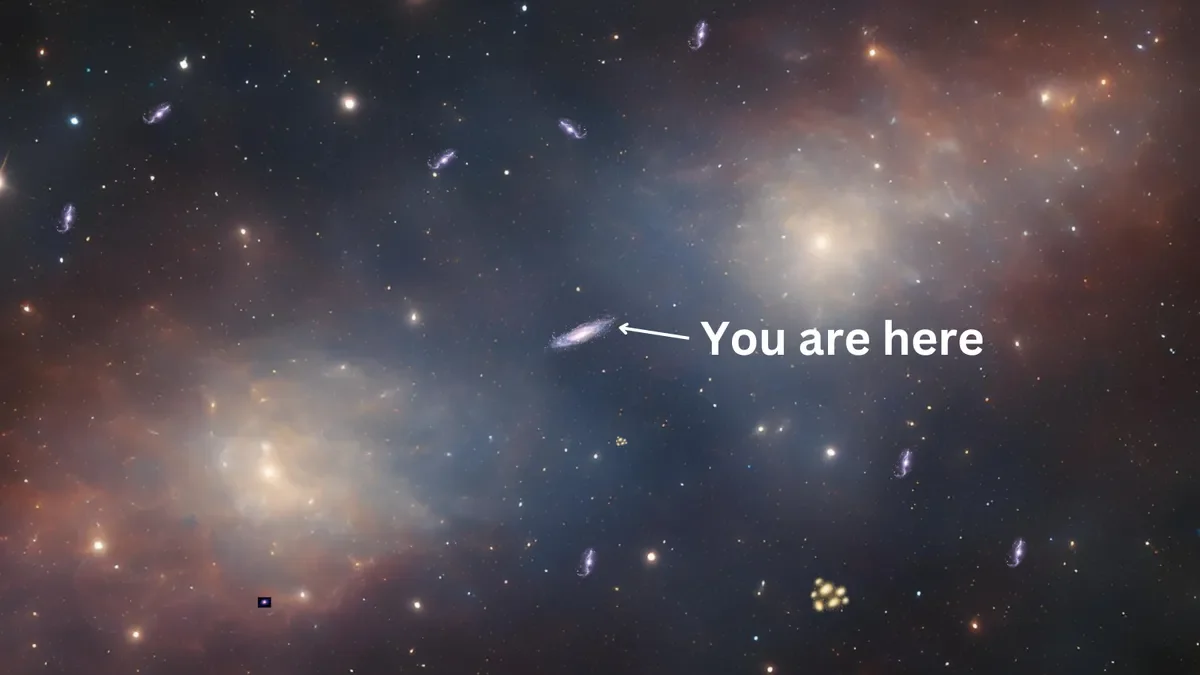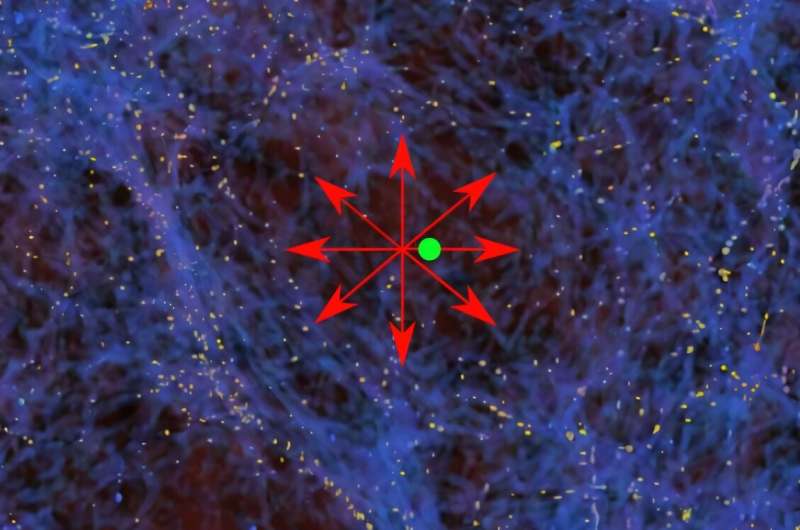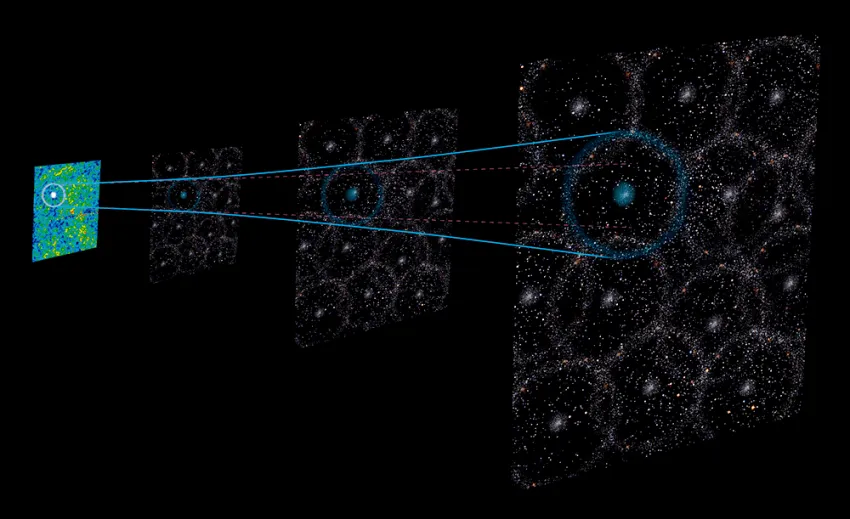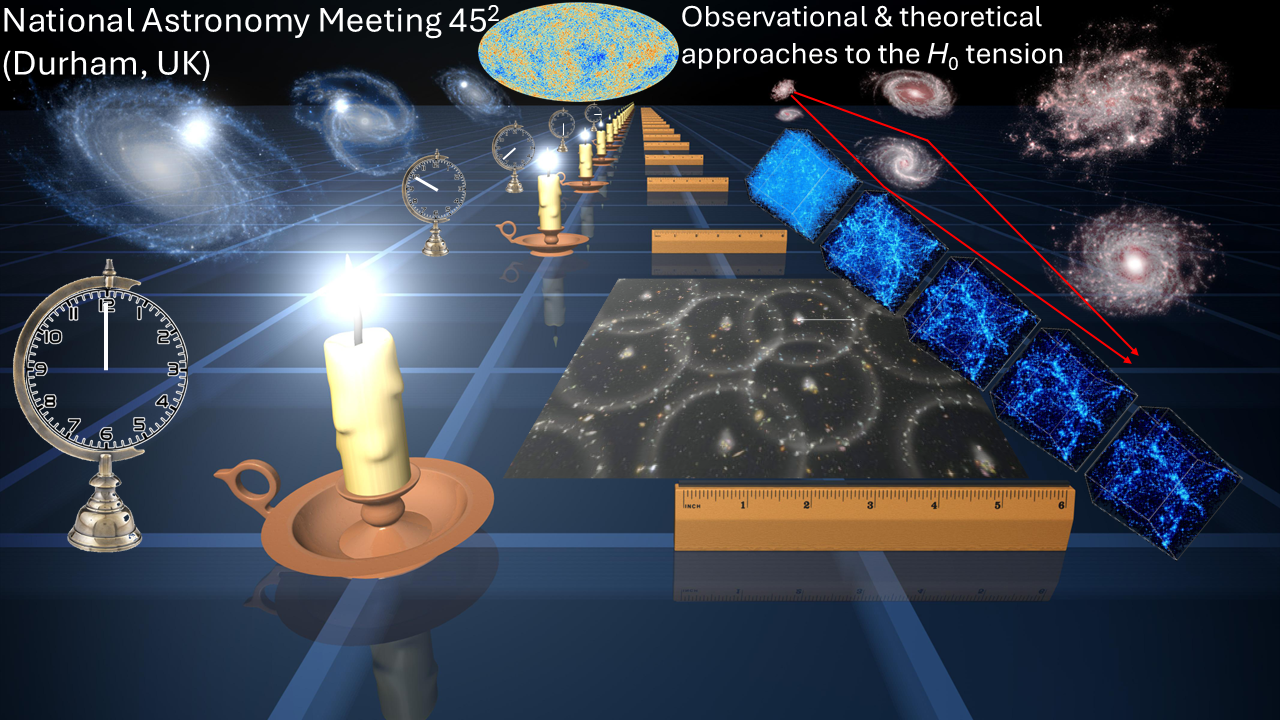Earth and the entire Milky Way galaxy might be sitting inside an enormous, mysterious void—a giant cosmic hole making our universe expand faster right here than anywhere else. This unusual idea, recently presented at the Royal Astronomical Society’s National Astronomy Meeting (NAM) in Durham, aims to resolve a puzzle known as the “Hubble tension.” It may also help scientists confirm the universe’s true age, currently estimated at around 13.8 billion years.
In 1929, astronomer Edwin Hubble discovered that galaxies are speeding away from each other. He introduced the “Hubble constant,” a number representing how quickly the universe is expanding today. Scientists measure this expansion in two main ways. First, they observe nearby stars and supernovae to track how fast objects move away from Earth. Second, they analyze data from the early universe’s cosmic microwave background (CMB), the afterglow of the Big Bang.
These two approaches, however, don’t agree. Nearby measurements suggest the universe is expanding at about 73 kilometers per second per megaparsec (km/s/Mpc). Yet, studies of the early universe suggest a slower rate, around 67 km/s/Mpc. This mismatch is the Hubble tension, puzzling scientists for nearly a decade.

Dr. Indranil Banik, from the University of Portsmouth, proposes a captivating explanation: Earth might be near the center of a massive cosmic void—a region roughly a billion light-years wide where matter is 20% less dense than average. Gravity pulls matter away toward denser outer regions, making the void even emptier over time. This emptying effect causes galaxies nearby to appear as though they’re racing away faster than usual.
“A potential solution to this inconsistency is that our galaxy is close to the centre of a large, local void,” said Dr. Banik. “The Hubble tension is largely a local phenomenon, with little evidence that the expansion rate disagrees with expectations in standard cosmology further back in time. So a local solution like a void is promising.”
Surveys of galaxies around us offer some support, showing fewer galaxies here than in neighboring regions. However, critics argue that such a large, empty space conflicts with the standard model of cosmology, which expects matter to be evenly distributed over vast distances.
Related Stories
Dr. Banik and his team strengthened their argument by studying baryon acoustic oscillations (BAOs)—ancient sound waves from the early universe, frozen in space shortly after the Big Bang. These waves serve as a cosmic measuring stick, letting scientists map how the universe expanded over billions of years.
“A local void slightly distorts the relation between the BAO angular scale and redshift,” explained Banik. Redshift measures how much the universe expanded while light traveled from distant galaxies to Earth. A void would alter redshift measurements, making expansion appear faster locally.
The research team analyzed two decades of BAO data, comparing the void model against standard cosmological models. Their findings were dramatic: “We showed that a void model is about one hundred million times more likely than a void-free model,” Banik said.

Although compelling, BAO data isn’t enough to settle the debate entirely. Scientists will next use “cosmic chronometers”—galaxies that have stopped forming stars—as independent clocks to confirm this theory. By examining the types of stars present, astronomers estimate a galaxy’s age and match it with its redshift. This provides an independent timeline of the universe’s expansion.
Combining chronometer findings with BAO and supernova measurements could either reinforce the void hypothesis or reveal the need for even stranger solutions, perhaps involving new physics.
Despite these promising results, skepticism remains strong. Critics argue that cosmological simulations don’t support such massive voids. They predict matter should average out more evenly across large regions, making vast empty spaces improbable. Improved galaxy surveys might yet fill in the apparent gaps, eliminating the evidence for a void altogether.
“The existence of such a large and deep void is controversial; it doesn’t mesh particularly well with the standard model,” Banik acknowledged. But since the idea can be tested directly, scientists expect upcoming data from next-generation telescopes to clarify this cosmic mystery.
If future research confirms the void, scientists might need to rethink what “average” means in the cosmos. A gigantic empty space around our galaxy would significantly influence how we measure cosmic expansion and possibly revise our understanding of fundamental physics.
Whether this mysterious void is real or if something deeper and more unexpected is causing the Hubble tension, new observations will soon shed light on this compelling cosmic riddle.

The Hubble Tension, sometimes referred to as the Hubble Crisis, refers to the significant disagreement between different measurements of the universe’s expansion rate. This expansion rate is quantified by the Hubble constant (H₀).
The problem is that the values derived from observations of the early universe (using the Cosmic Microwave Background or CMB) and from measurements of the late or local universe (using objects like Cepheid variable stars and Type Ia supernovae) don’t match.
This discrepancy is significant and persists even as measurement techniques improve and become more precise. The fact that two highly accurate methods yield different results suggests that there might be something missing or misunderstood in our current cosmological model.

The Hubble Tension presents a significant challenge and an exciting opportunity for cosmologists to potentially uncover new physics and deepen our understanding of the universe.
Note: The article above provided above by The Brighter Side of News.
Like these kind of feel good stories? Get The Brighter Side of News’ newsletter.
The post Earth may lie in a gigantic void that skews our view of the expanding universe appeared first on The Brighter Side of News.